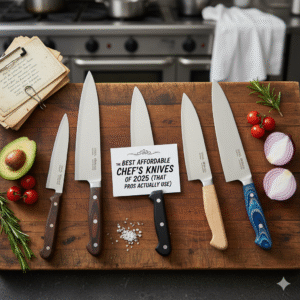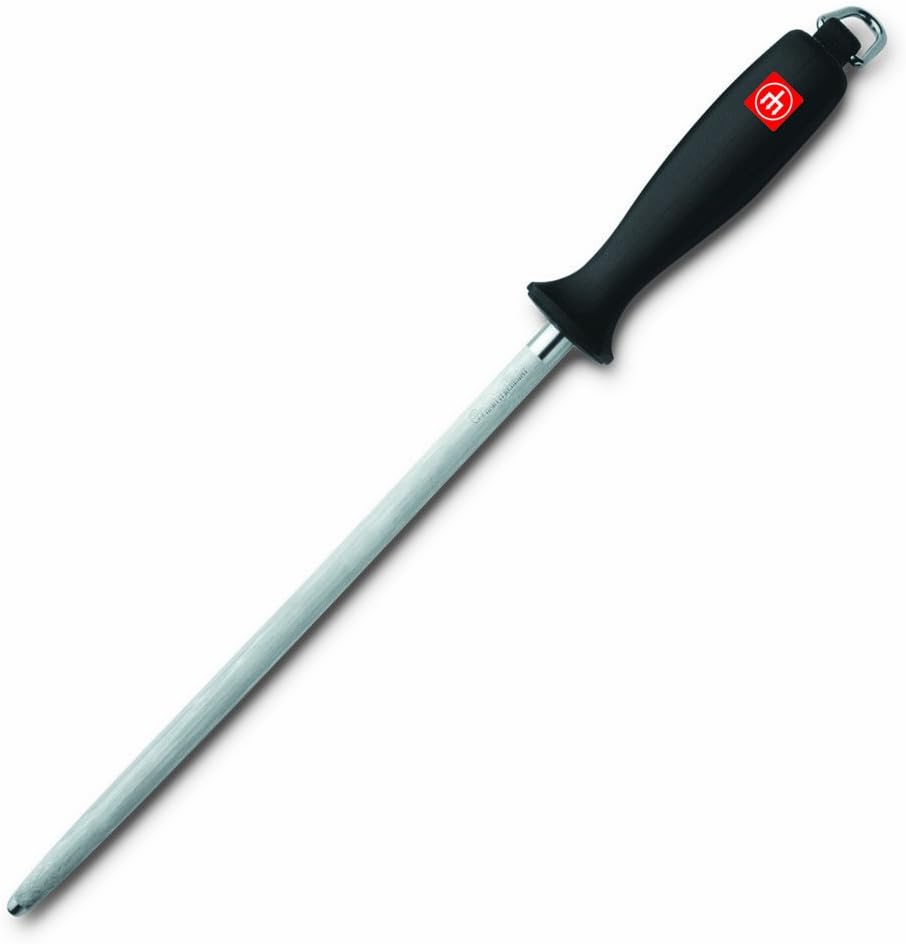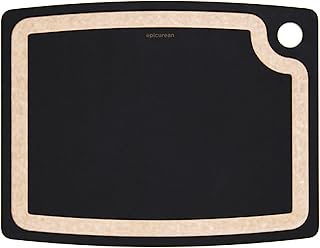The Best Affordable Chef’s Knives of 2025 (That Pros Actually Use)
Let’s be honest. The world of kitchen knives can be incredibly intimidating. You see celebrity chefs wielding gorgeous, expensive blades and read about German steel and Japanese forging techniques. It’s easy to believe that you need to spend hundreds of dollars to get a “good” knife. After 15 years of passionate cooking and testing dozens of knives, I’m here to tell you that is absolutely false. This guide is dedicated to the true heroes of the kitchen: the affordable workhorses that offer world-class performance for the price of a few lattes. We’re going to uncover the best value on the market and show you how to get a knife that will change the way you cook, without emptying your wallet.
Affiliate Disclosure & My Value Promise: This post is dedicated to saving you money while improving your cooking. To support the extensive testing behind this guide, I use affiliate links. If you purchase through them, I may earn a commission at no extra cost to you. My promise is to recommend only the products that offer the absolute best performance-per-dollar, based on my personal, long-term experience.
The Best Affordable Chef’s Knives: Top Picks
I’ve tested dozens of budget-friendly knives. These are the undisputed champions that consistently outperform their price tags. For this guide, “affordable” means a street price under $75.
| Category | Brand & Model | Why It Wins | Price |
|---|---|---|---|
| 🏆 Best Overall Value | Victorinox Fibrox Pro 8″ | The undisputed king. Pro-grade sharpness and an unbeatable grip. It’s the smartest money you can spend in your kitchen. | Check Price |
| 💪 Best Budget Forged | Henckels Classic 8″ | Offers the satisfying weight, balance, and durability of a forged knife at a stamped-knife price. A massive value. | Check Price |
| ✨ The Hidden Gem | Mercer Culinary Renaissance 8″ | A true Wüsthof Classic competitor for a fraction of the cost. High-quality forged German steel and construction. | Check Price |
| 🇯🇵 Best Budget Japanese-Style | Tojiro DP Gyuto 8.2″ | Features a genuine Japanese VG-10 steel core for incredible sharpness and edge retention. Unheard of at this price. | Check Price |
The In-Depth Reviews: Why These Knives Punch Above Their Weight
Let’s break down what makes each of these affordable champions a worthy addition to your kitchen.
1. Victorinox Fibrox Pro 8-inch: The Undisputed King of Value

Why It’s a Legend
There is no better performance-per-dollar in the entire culinary world than the Victorinox Fibrox Pro. It is the secret weapon of line cooks, butchers, and culinary students for a reason. Its Swiss-made stamped blade is laser-tested for a wickedly sharp edge right out of the package. It’s lightweight, nimble, and reduces fatigue. But its true superpower is the patented Fibrox handle, a slightly soft, textured material that provides a safe, non-slip grip even when your hands are wet or greasy. It may not be pretty, but it’s a tool of pure, uncompromising function. For an even more detailed look, you can read my full Victorinox chef knife reviews.
Pros
- World-class sharpness
- Legendary non-slip grip
- Incredibly durable and easy to maintain
- Lightweight and comfortable for long use
Cons
- Plain, utilitarian appearance
- Lacks the weight and balance of a forged knife
2. Henckels Classic 8-inch: The Forged Value Proposition

Why It’s a Great Deal
If you love the satisfying heft and balance of a traditional German knife but don’t have a Wüsthof budget, this is the knife for you. The Henckels Classic is a genuine forged knife made in Spain from high-quality German steel. This means, unlike most knives in its price range, it has a full bolster and a full tang running through the handle. This construction gives it a substantial, balanced feel that inspires confidence. It’s a fantastic bridge between the lightweight utility of the Victorinox and the expensive German heirlooms. This knife is a core part of the Henckels vs Victorinox debate, representing a more traditional choice.
Pros
- Forged construction offers great balance
- Durable and feels substantial in the hand
- Excellent value for a forged knife
- Classic, comfortable design
Cons
- Requires more frequent honing
- Not as sharp out-of-the-box as Victorinox
3. Mercer Culinary Renaissance 8-inch: The Hidden Gem

Why It’s a Secret Weapon
Mercer is a well-kept secret among culinary professionals. The Renaissance line is, for all intents and purposes, a direct competitor to the Wüsthof Classic, but at a third of the price. It’s a one-piece, fully forged knife made from high-carbon German X50CrMoV15 steel (the same type as Wüsthof and Zwilling). It has a full tang, a comfortable rounded handle, and a taper-ground edge that is incredibly sharp. In my hands, it feels almost identical to knives that cost far more. If you want the performance and feel of a premium German knife without the premium price tag, the Mercer Renaissance is one of the smartest buys you can make.
Pros
- Fully forged from high-carbon German steel
- Exceptional balance and ergonomics
- Offers premium performance at a budget price
- Highly durable with a full tang
Cons
- Lacks the brand prestige of Wüsthof/Zwilling
- Slightly less refined fit and finish
How to Shop Smart: A Buyer’s Guide to Affordable Knives
What makes a good affordable knife? It’s all about smart compromises. Manufacturers save money on things that don’t directly impact cutting performance.
Stamped vs. Forged: Why Stamped Usually Wins on a Budget
As we’ve seen, forged knives (like the Henckels and Mercer) are hammered from a single piece of steel. This is expensive. Stamped knives (like the Victorinox) are cut from a sheet of steel. This is far more efficient. While forging provides better balance and heft, modern heat-treatment technology has made stamped blades incredibly strong and flexible. For pure cutting ability, a well-made stamped blade can compete with any forged knife, which is why it’s the dominant construction method in the affordable category.
Steel: Toughness Over Hardness
Expensive Japanese knives use very hard steel (60+ HRC) to hold a razor edge. The trade-off is that they are brittle and can chip. Affordable knives use a smarter approach. They use slightly softer, but tougher, stainless steel (around 55-58 HRC). This steel might not hold its edge for quite as long, but it is:
- More Durable: It’s far less likely to chip if you accidentally hit a bone.
- Easier to Sharpen: Softer steel responds beautifully to simple honing steels and pull-through sharpeners, making maintenance a breeze for beginners.
Handles: Function Over Form
You won’t find exotic wood on these knives. You’ll find highly practical, durable materials. The Fibrox on the Victorinox is a marvel of grip and safety. The triple-riveted polymer on the Henckels and Mercer is virtually indestructible. These materials are chosen for longevity and performance, not for looks.
What Do You Sacrifice? The View from the Top
So if these knives are so good, why would anyone spend more? When you pay for a premium knife, you’re paying for the last 10% of refinement. As we explore in our Wüsthof vs. Victorinox comparison, the extra money buys you perfect balance, a satisfying heft from the forged bolster, and superior edge retention from more advanced steel treatments. The difference between a Wüsthof and a Shun, detailed in our Shun vs. Wüsthof article, showcases the artistic, high-performance world of Japanese steel. These are all phenomenal upgrades, but they are luxuries, not necessities. These affordable champions prove that.
Frequently Asked Questions
What is the best chef’s knife for under $50?
Without a doubt, the Victorinox Fibrox Pro 8-inch chef’s knife. There is no other knife that offers this level of sharpness, durability, and ergonomic comfort for that price. It is the reigning champion of value.
Should I buy a cheap knife block set from a department store?
I would strongly advise against it. Those huge, 20-piece sets from unknown brands are almost always made from terrible quality steel that won’t hold an edge. You are far better off buying one of the excellent individual chef’s knives recommended here, and adding a paring knife, than buying a whole block of useless knives. The only exception is a set from a reputable brand like Henckels.
How are these different from premium brands like Zwilling?
The main differences are construction, materials, and refinement. A premium knife like a Zwilling Pro is forged for better balance, uses a more advanced ice-hardened steel for better edge retention, and has a more seamless, premium finish. It’s a luxury experience. Affordable knives prioritize the cutting edge above all else. We compare these two directly in our Victorinox vs. Zwilling guide.
Final Verdict: The Smartest Money You’ll Ever Spend in Your Kitchen
A great chef’s knife is the single most important tool for anyone who loves to cook. It makes prep work faster, safer, and infinitely more enjoyable. And the good news—the great news—is that you don’t need to spend a fortune to get one.
Each of the knives in this guide is a testament to smart design and incredible value. They prove that with the right materials and a focus on what truly matters—a sharp, durable edge and a comfortable, safe handle—you can create a tool that competes with the very best.
My final advice is simple: if you are using the dull, flimsy knives that came in a block set years ago, buying any one of these recommendations will be the single biggest upgrade you can make in your kitchen. For the price of a night out, you can get a tool that will bring you joy every single time you use it for years to come. That’s a value proposition that’s impossible to beat.























